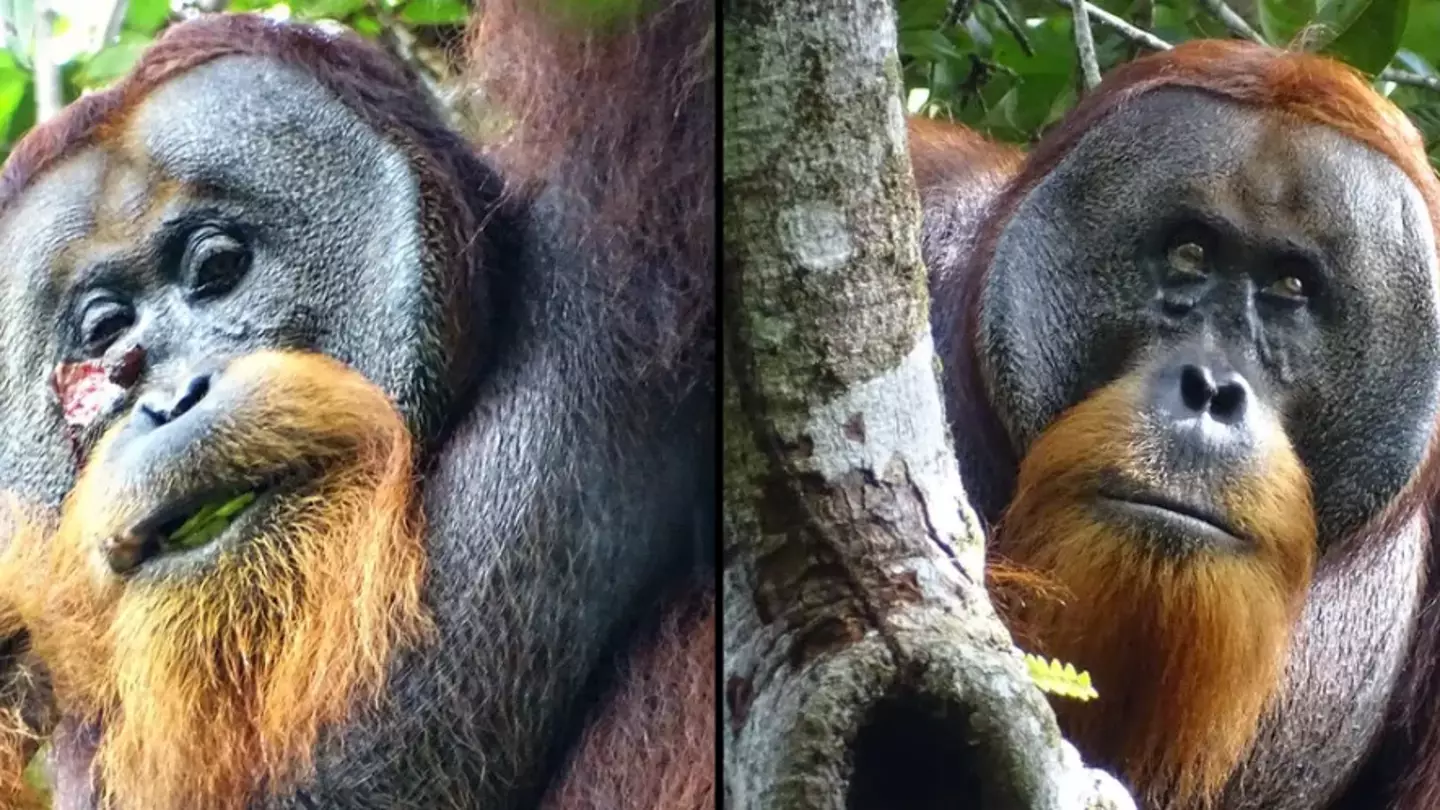
Wow, well done, you managed to put a plaster on your toe after you walked into the coffee table.
It’s hardly impressive when we treat our own little wounds – as humans that is.
But scientists have been left amazed after an orangutan used wild medicine to treat a wound on his face.
Advert
For the first time, biologists observed a wild male Sumatran orangutan in Indonesia using a plant with known medicinal properties to treat his face.
Named Rakus, he’d sustained quite a gash on his face three days before scientists observed his self-medication at the Suaq Balimbing research site.
Here, 150 critically endangered Sumatran orangutans live in the protected rainforest area.
Advert
Rakus chewed on leaves of a climbing plant known as Akar Kuning. He then smeared the juicy mixture onto the wound until it was totally covered. This process lasted over 30 minutes.
Researchers say there was no signs of wound infection in the days that followed. Plus, the nasty thing closed up within five days and was completely healed within a month.
They added that it’s likely Rakus was intentionally treating the wound with the medicinal plant as he didn’t start applying it to other parts of his body.

Dr Isabelle Laumer, a primatologist and cognitive biologist at the Max Planck Institute of Animal Behaviour, explained that during their ‘daily observations’ they noticed the orangutan has sustained the wound ‘most likely during a fight with a neighbouring male.
Advert
The Akur Kuning plant is known for having pain relieving and anti-inflammatory effects and is often used in traditional medicine to treat diseases such as diabetes, dysentery and malaria.
Researchers did say there’s also a possibility that Rakus found out about the plant’s healing properties accidentally.
Dr Schuppli, an evolutionary biologist at the Max Planck Institute of Animal Behaviour in Germany, said: “Orangutans at the site rarely eat the plant.
“However, individuals may accidentally touch their wounds while feeding on this plant and thus unintentionally apply the plant’s juice to their wounds.

“As Fibraurea tinctoria has potent analgesic effects, individuals may feel an immediate pain release, causing them to repeat the behaviour several times.”
Advert
The team also explained that the existence of self-medication in great apes (who are the closest relatives to humans) suggest the behaviour could have arisen in a common ancestor.
“The treatment of human wounds was most likely first mentioned in a medical manuscript that dates back to 2200 BC, which included cleaning, plastering, and bandaging of wounds with certain wound care substances,” said Dr Schuppli.
“As forms of active wound treatment are not just human but can also be found in both African and Asian great apes, it is possible that there exists a common underlying mechanism for the recognition and application of substances with medical or functional properties to wounds and that our last common ancestor already showed similar forms of ointment behaviour.”
Featured Image Credit: ARMAS/SAFRUDDINTopics: Science, Animals, Health, World News
